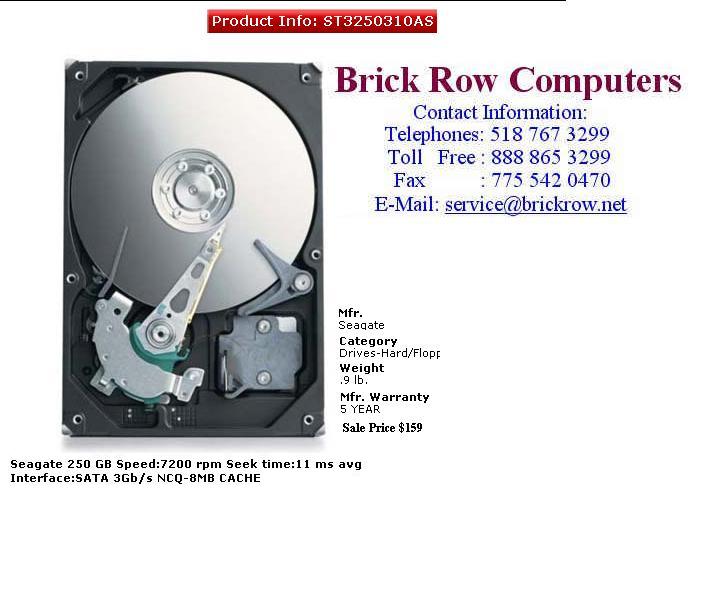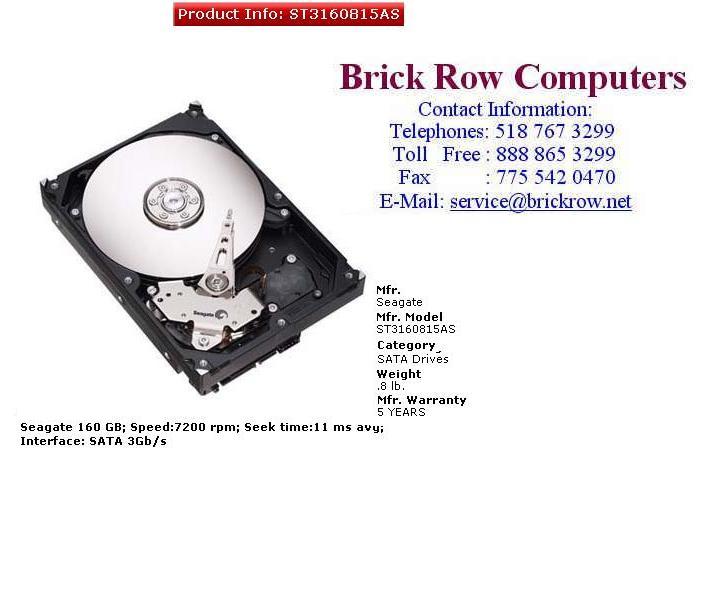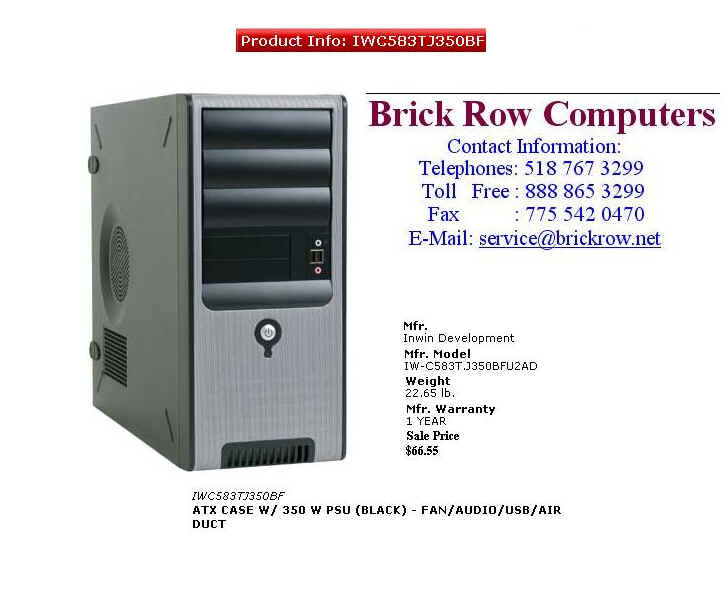
At Brick Row, our Custom Built PCs are assembled from Major Manufacturers Tier One components.
We have shown the
major components of each system below.
Due to parts availability and the intended use of each system,
the final assembled product sometimes varies from those shown.
However, at all times, major brand name components are used in
the assembled machine.
The computer case houses the internal
components.
Inwin Development has been a leading supplier of high quality
cases for many years.
The following is the current offering with Brick Row Systems:

The System Board(also known as the
'Motherboard'), serves as the basis for components
such as CPU, Memory, Modem, Network, Graphics and other accessory
items such as Sound Effects.
It mounts vertically in the case.
Many manufacturers produce these boards.
Brick Row buys the System Board products from Intel, MSI and DFI,
three of the major players.
The intended use of the system and price/performance availability
serve to determine each on an individual basis.
Following are the samples of System Boards we currently use in our new and upgraded systems:
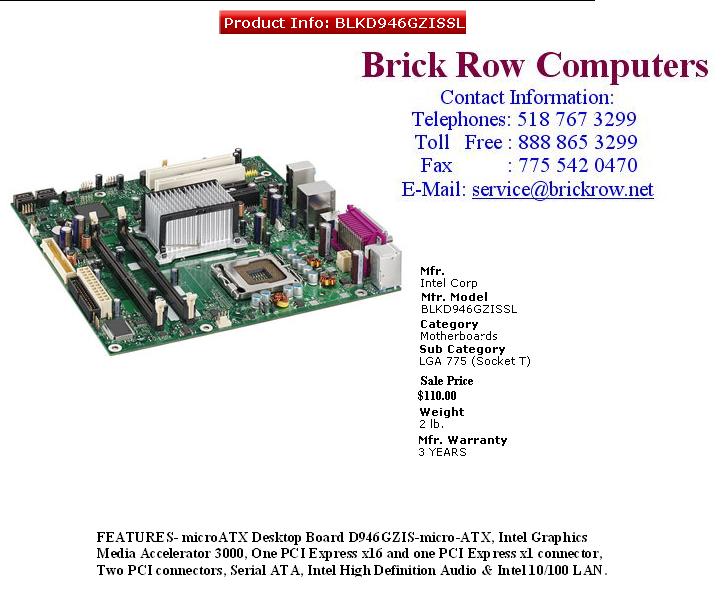
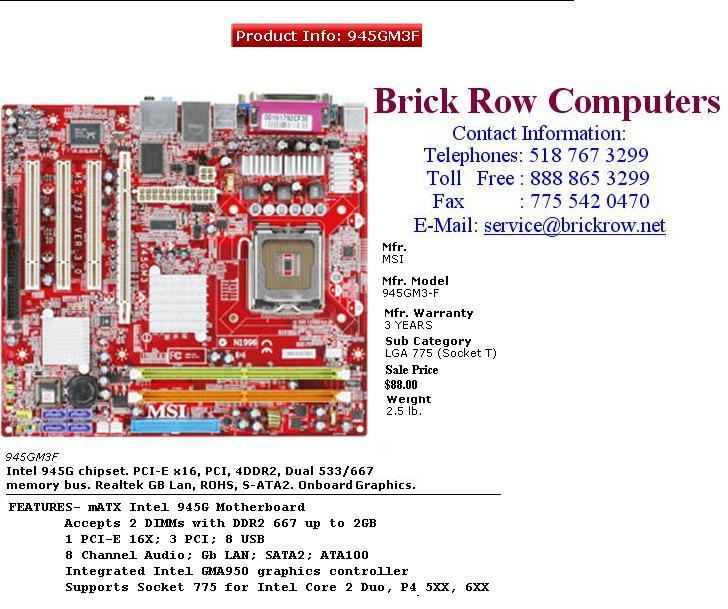
The next logical component of the
computer system is the Central Processing Unit('CPU').
These units do the actual computing 'work' and serve as the heart
of the computer. Newer models
are released on a regular basis with expected availability and
price fluctuates due to market
availability. At Brick Row we work with our Distributors and
attempt to find the most cost
effective solution for our systems.
We use CPUs from both Intel and AMD with representative samples
of both below:

System
Memory, or 'RAM' as it is sometiems referred to, purpose is to
serve as a temporary location for data and instructions that must
flow quickly in and out of the Central Processing Unit(CPU) or
microprocessor. If power is removed from the RAM, all data in the
memory is lost. Data to be saved must have been moved to the Hard
Drive or some other non-volatile storage by the software.
For
example, when you are 'writing' a word processing document, the
actual process of taking the keystrokes and moving them to the
document is handled mostly via RAM and, when it is completed, the
document will be located on some kind of storage device. The
process is not recorded as such.
Computer memory is one of the items that has sometimes violent price fluctuations and really follows the market. Suffice it to say that RAM is much faster than it used to be and, at the same time, regularly comes in larger quantities and costs less than it used to. Quite a rare combination in today's world.
Following is a sample of the memory carried at Brick Row.
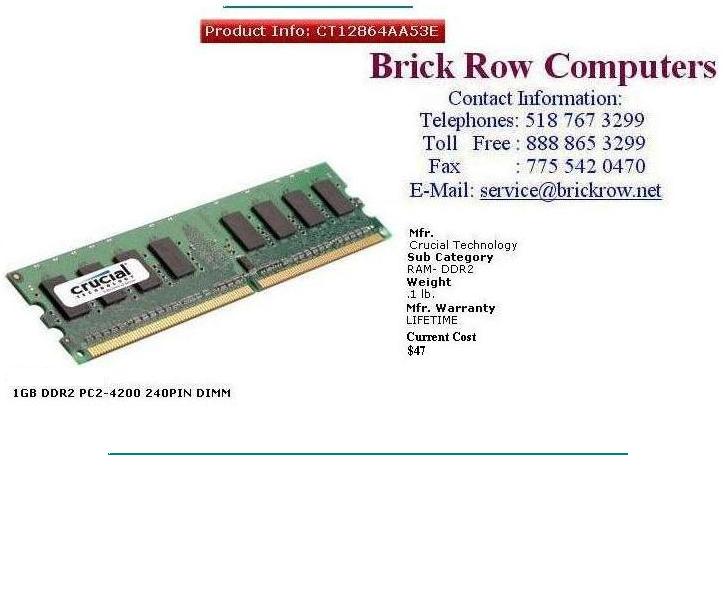
The
Hard Drive is the next component to be considered and it is
probably the most
mechanical and, some would feel, is most important. All data
resides on the Hard Drive
and, in most computers, it 'spins' at about 7200 Revolutions Per
Minute, running as long
as the computer power is on-save some systems that will shut the
drive down after a
period of inactivity.
The
capacity of these drives is measured in Gigabytes, or just 'GB'.
They normally
can be cabled in one of two ways, either what is called 'ATA' or
'SATA' with most newer
units being the SATA variety.
At
Brick Row we normally purchase and sell mostly drives of Seagate
manufacture
and sometimes, depending on availability, Western Digital. These
brands are guaranteed
for a minimum of three years by the respective manufacturers. As
mentioned earlier, the
Hard Drives store all saved data and each time your computer
calls for data, 'read/write
heads' slide back and forth across the individual disk platters
seeking the data requested.
In short, they work hard and tend to get pretty warm.
We
attempt to stock a sampling of different capacity drives for both
laptop and desktop
computers. When we service systems, we note that data on the
drives does not normally
occupy anywhere near the total capacity of the drive. In fact, if
the machine has a 40 GB Drive
chances are pretty good that 30 GB is unused.
The
average size drive we install is approximately 80 GB and the
largest is about 350 GB,
with 120 or 160 used for new systems and the 80 GB variety for
repairs and upgrades. Some of
the older System Boards will not recognize the larger capacities.
Below are samples of our in-stock Drives:
